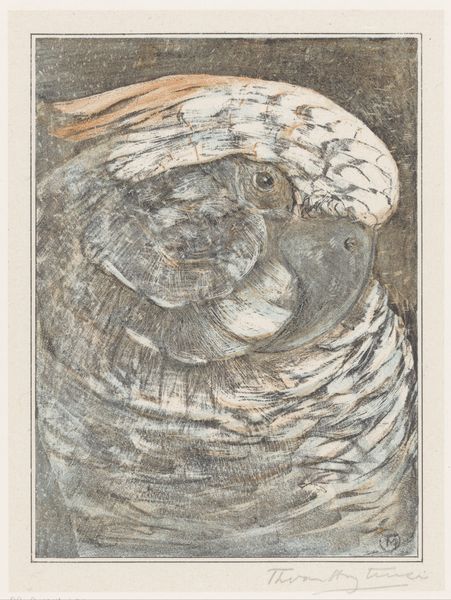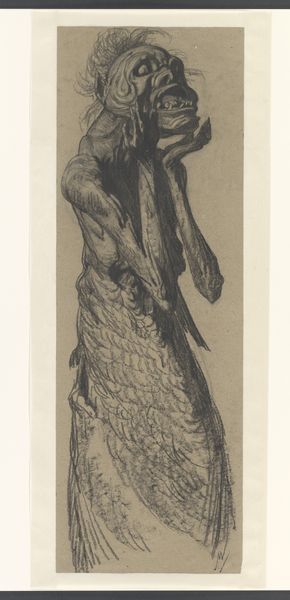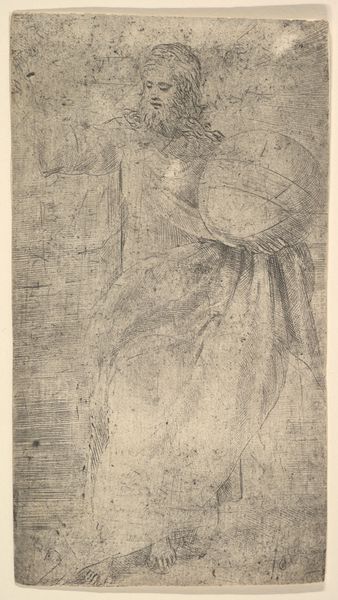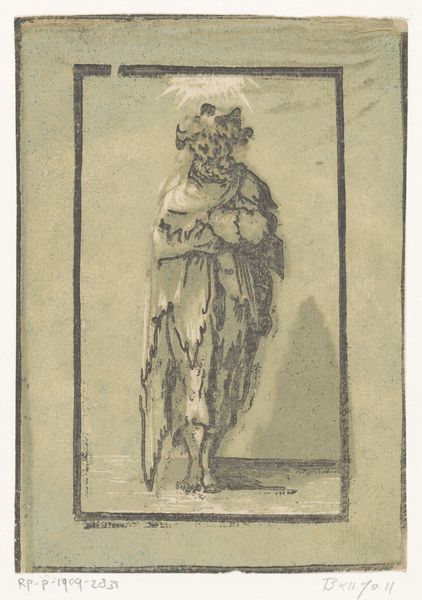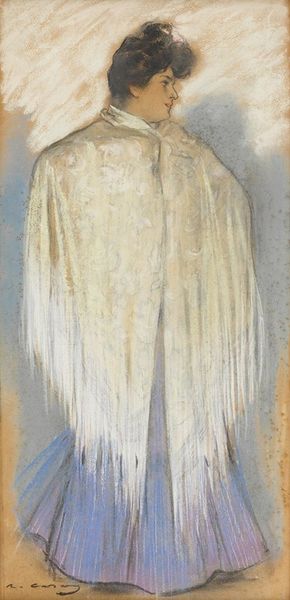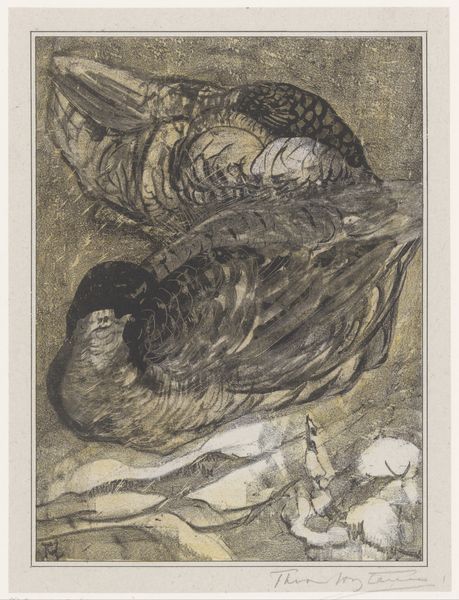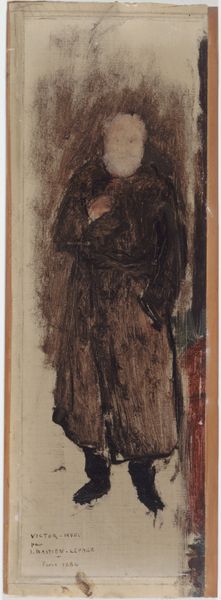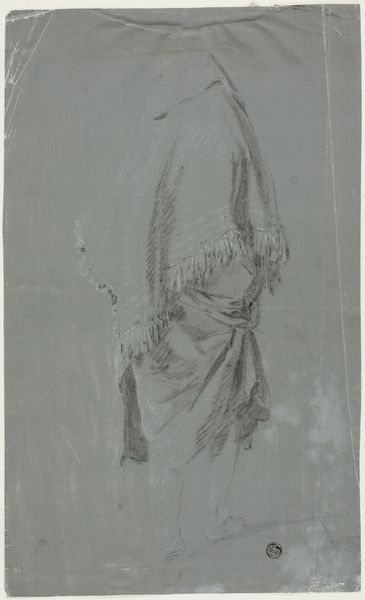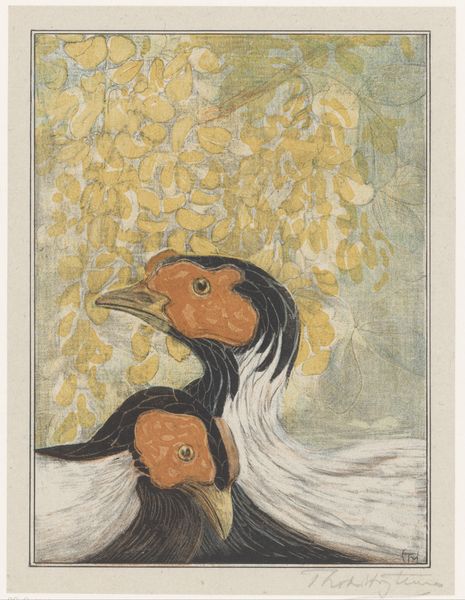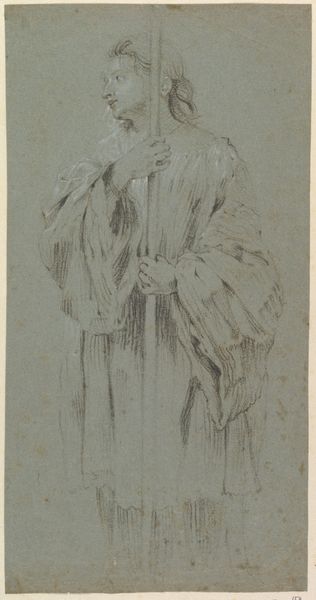
Dimensions: height 223 mm, width 168 mm, height 425 mm, width 302 mm
Copyright: Rijks Museum: Open Domain
Theo van Hoytema made this study of a white peacock on a branch without a specific date using lithography. Peacocks were very popular in the Netherlands at the turn of the century, appearing as motifs in art and design. But their popularity was also a marker of the colonial project. Exotic animals such as these were increasingly present in European zoos and menageries in the nineteenth century, standing in as symbols of imperial power and control over the natural world. Here, though, the peacock is presented in relative simplicity, even humility. In turning away from us, it offers a more introspective image. The peacock also appears to lack the elaborate fan of feathers for which it is known, perhaps undercutting any overt connotations of wealth, luxury, or power. To understand Hoytema’s lithograph more fully, we might research his involvement with the socialist movement and his artistic relationship to figures like Nieuwenhuis and Roland Holst. These social and political contexts can offer a deeper understanding of the artwork.
Comments
No comments
Be the first to comment and join the conversation on the ultimate creative platform.
